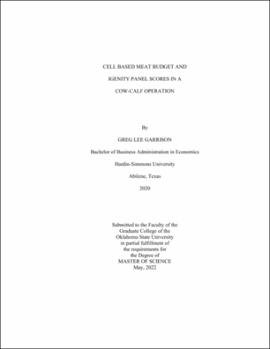| dc.description.abstract | The first essay examines the economic feasibility of cell-based meat. Cell-based meat has received much favorable press and is being touted as a replacement for the entire livestock industry. The question addressed here is what will it cost to produce cell-based meat in a large-scale production facility? Previous research has focused on the cost of the cell-culture medium rather than other potentially important costs. This research estimated startup, production, employment, and transportation costs in addition to available cell-culture medium costs and expected output per batch to create a full-detailed enterprise budget. Using a compilation of new data and published literature, results show the cell-based meat industry is not likely to be economically competitive with animal-derived proteins. Assuming that technology will be developed to reduce the cost of the medium including growth hormone substitutes and buying ingredients in bulk, one kilogram of cell-based meat is estimated to cost $63/kg to produce in a large-scale facility. The three major costs of production are the cell-culture medium, bioreactors, and labor. These costs make up over 80% of the overall cost of production. The second essay examines Igenity panel scores and productivity in a cow-calf operation. Igenity panel scores measure genetics and have proven helpful in feedlot and bull selection, but the cost of such testing has prevented widespread adoption. Little research, however, has been conducted to understand the relationships between genotypic panel scores and economically relevant cow-calf production variables such as weaning weights, cow weights, and birth weights, all of which are important determinants of cow-calf profitability. Understanding these relationships could lead to improvements in efficiency and profitability in the beef sector. Data from four ranches in South Central Oklahoma were used with mixed regression models to determine the relationships between economically relevant production variables and genetic panel scores. Marginal revenues were calculated for each panel score to show their effect on calf revenue, cow revenue, and dystocia. Some factors such as tenderness, average daily gain, residual feed intake, and marbling had negative effects on cow-calf profitability. | |
